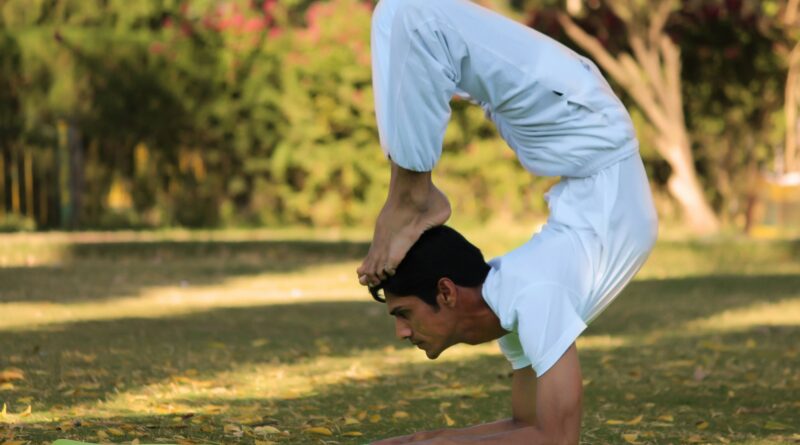Best Yoga Tips for Cricket Players to Avoid Injury
Cricket players reach their maximum physical capability while they bat for extended periods and run between wickets and deliver extended bowling performances. Consecutive stress placed on both muscles and joints creates injuries at any time. Practicing yoga provides athletes an optimal opportunity to develop body strength while boosting flexibility and averting physical damage.
Key Highlights:
- Best yoga tips for cricket players to avoid injuries
- Top 5 yoga poses every cricketer must practice
- How yoga improves flexibility, strength, and recovery
- Importance of breathing exercises for injury prevention
- Shoulder protection yoga routines for fast bowlers
- Essential post-match yoga stretches for faster recovery
- How often cricket players should practice yoga for best results
1. Why Yoga is Essential for Cricket Players?
Most players in cricket only see fitness as tied to gym exercises only. Regular exercises fail to deliver the benefits that yoga practice provides specifically. The physical development which occurs through yoga also produces mental clarity and complete flexibility and breathing control benefits athletes in cricket.
The following reasons show why cricket players need to practice yoga:
- Yoga leads to injury prevention because it strengthens joints and muscles against such occurrences.
- The practice of yoga enables your muscles to adapt to rapid stretching motions that occur in physical play.
- The correct body position alongside coordinated movement skills serve first-class athletes to excel in batting and bowling and fielding functions.
- Through practice of yoga people develop mental clarity so they stay composed and focused during stressful times.
Athletes who practice yoga win crucial advantages against their competitors.
2. Top 5 Yoga Poses Every Cricketer Should Try
Different yoga asanas produce significant effects on athletes’ flexibility together with their muscle power and their ability to recuperate. Special yoga poses better support the movement needs of cricket.
Every cricketer must perform the following five yoga poses:
| Yoga Pose | Benefits for Cricketers |
| Downward Dog (Adho Mukha Svanasana) | Stretches shoulders, calves, and hamstrings. |
| Cobra Pose (Bhujangasana) | The practice develops both spinal strength and chest expansion ability. |
| Warrior II (Virabhadrasana II) | Builds leg strength and improves balance. |
| Pigeon Pose (Kapotasana) | A loose, flexible hip allows athletes to sprint faster and bat with more power. |
| Child’s Pose (Balasana) | Back muscle stretching through gentle movements helps the body find relaxation. |
Body flexibility and stamina receive double benefits when athletes perform these stretching poses to protect themselves from injuries.
3. How Yoga Helps Improve Flexibility and Strength for Cricket?
Cricket athletes need to perform fast running movements with quick turns followed by immediate stretch reactions. Proud flexibility and weak muscles create conditions for muscle strains that result in injuries. Daily practice of yoga enhances physical well-being automatically.
Here’s how yoga helps:
- Running becomes faster and smoother through enhanced stretching of the hamstrings and hips.
- Efficient bowling and batting rely on a robust lower back and core that yoga delivers.
- Your shoulder and wrist joints become more mobile because of practicing this exercise.
- People develop endurance by using sustained, controlled breathing combined with muscular control.
Competition agility, along with minimal muscle distress, occurs among cricket players who implement flexibility exercises.
4. The Role of Breathing Exercises in Injury Prevention for Cricketers
The practice of breathing exercises known as pranayama functions as a secret tool for cricket athletes. Aside from mental relaxation, controlled breathing allows the body to heal quickly while reducing the risk of injuries.
Benefits of breathing exercises include:
- Digesting more oxygen means muscles last longer before they become fatigued.
- The recovery process shortens when training sessions and matches reach their intense phase.
- Lower stress permits the body to avoid muscle tension, therefore preventing injuries.
- Sharper mental focus is crucial during tight matches.
Adding Anulom Vilom (alternate nostril breathing) or box breathing to any daily fitness routine will produce better overall health benefits.
5. Save Your Shoulders – Yoga for Fast Bowlers
Every cricket team needs fast bowlers as their fundamental strength, though their upper bodies sustain severe damage during matches. Proper care becomes important since rotator cuff tears and shoulder tightness appear frequently in unattended conditions.
Yoga provides several protective mechanisms for bowlers through its practice.
- The Gomukhasana pose, known as Cow Face Pose, opens the shoulders deeply while improving flexibility.
- The Thread the Needle Pose reduces tension in both upper back and shoulder areas.
- Perform the Sphinx Pose to reinforce your back capabilities and enhance your body alignment.
- Downward Dog: Keeps the shoulders strong and mobile.
Pro Tip: Fast bowlers should perform shoulder-focused yoga stretches three to four times weekly to improve athletic performance while extending their productivity.
6. Top Yoga Stretches for Cricket Players After a Match
After a match is settled, the body requires cooling off and recovery time for self-healing. Failure to perform post-match stretching practice results in increased tightness together with fatigue and possible injuries.
Important post-match yoga stretches:
- Seated Forward Fold (Paschimottanasana): Loosens hamstrings and back.
- Supine Spinal Twist (Supta Matsyendrasana): Relieves spinal stress.
- Reclining Pigeon Pose: The Reclining Pigeon Pose stretches tight glute muscles together with hip areas.
- Legs Up the Wall (Viparita Karani): The Legs Up the Wall (Viparita Karani) technique enhances blood flow while limiting swollen tissues.
Post-game muscle stretching for 10-15 minutes enables recovery and prepares athletes to perform in their upcoming games.
7. How Often Should Cricket Players Practice Yoga?
The quality of maintaining consistency in your practice outweighs the time you spend practicing yoga. The outcome is superior from regular, shorter practice sessions instead of occasional, prolonged practice.
Since the following guidelines provide an easily understandable schedule for cricket players to practice yoga.
| Training Period | Recommended Yoga Practice |
| Off-Season | 4-5 days a week (full sessions) |
| In-Season | 2-3 days a week (light sessions) |
| Recovery Days | Daily gentle stretching |
Daily practice of just 15-20 minutes will result in improved flexibility together with endurance and a focused mind, which accumulates steadily.
Conclusion
Cricket players benefit enormously from yoga, as this practice enables them to attain better muscular strength and flexibility and stops natural injuries from happening. The field performance of cricketers gets better along with their recovery times when practicing yoga on a regular basis.
All essential athletic requirements of professional athletes are covered by yoga because it enhances balance performance while protecting joints. Practicing yoga on a daily basis will revolutionize your progress in cricket. Permanent consistency during your initial start-up phase will lead to remarkable performance improvements.
Frequently Asked Questions
1. Which Yoga Poses Are Best for Fast Bowlers?
Fast bowlers achieve consistent bowling while protecting themselves from injuries because they must have strong shoulders combined with flexible movement and spinal stability. The following poses from yoga practice provide stretch and strength benefits to important regions:
- Performing Cow Face Pose (Gomukhasana) extends the shoulders in a deep manner to unlock tightness.
- USF2 develops a gentle motion that both stretches and twists the shoulder area with the upper portion of the back.
- Through Sphinx Pose, individuals develop robust lower back muscles, which strengthen their posture.
- The pose Downward Dog provides total body stretching, which builds shoulder motion while stretching hamstrings.
2. Can yoga help cricketers recover faster after a match?
Yes! People in athletic fields find yoga to be an outstanding tool that helps their bodies recover. The body’s muscles remain tense and loaded with lactic acid after a long competition, thus leading to the development of discomfort. Gentle stretching and breathing exercises:
- The exercises benefit circulation by allowing toxins to leave the body system.
- The practice improves muscle flexibility to result in an active and refreshed condition the next day.
- The practice calms down the nervous system to produce better sleep results coupled with swifter recovery processes.
3. Can Yoga Improve Batting Performance?
Absolutely! Batting beyond having strength demands a perfect alignment of physical balance with quick reactions and a clear mental state. Yoga builds:
- Striking various shots becomes more stable because of improved core strength.
- Motility of the shoulder joints with the hips creates fluid body movements.
- Improved ball-reading abilities result from enhanced focus and concentration levels of batsmen.
4. Is Yoga or Gym Better for Cricket Fitness?
They have different advantages that create their best results when practiced jointly.
- Building strength and power while developing endurances stands as a priority for gym training thus delivering advantages crucial for both powerful hitting and rapid bowling.
- Practicing yoga enhances flexibility and balance while safeguarding body health to retain peak athletic performance over time.
5. Why is yoga important for cricket players?
Yoga goes beyond stretching. Yoga provides cricketers with a whole-body and mental training program that delivers:
- The practice protects your body’s joints together with muscles from experienced injuries.
- Increases overall mobility and athletic performance.
- It provides effective stress management tools that ballplayers need during high-pressure situations.
- Through recovery enhancement, players receive the ability to train tougher along with more frequent sessions.
Your fitness level will benefit the most if you introduce yoga practice to your workouts particularly when you want to reduce injuries and play cricket longer.




